Physics
NYA Mechanics
Examination
Part I
Problem 1
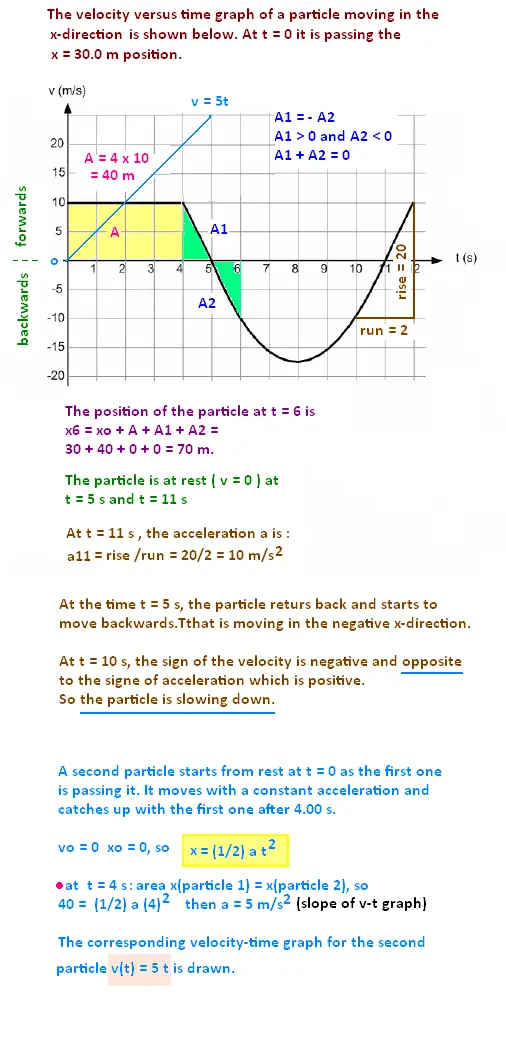
Problem 2
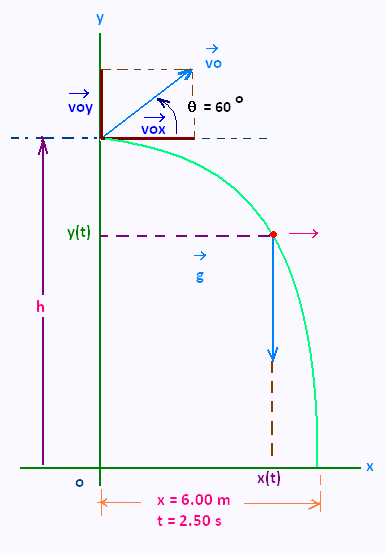
A water balloon is thrown by Sandra out of her
dormitory window at an angle of 60�. It lands
at the feet of Chris, who is standing a
horizontal distance of 6.00 m from the
building. If it takes 2.50 s to reach Chris�s feet,
determine the height h that Sandra threw it
from.
The equations of the motion of the ballon are:
y = h + vo sin 60 t - (1/2) g t2
x = vo cos 60 t
y = h + (√3 /2) vo t - (g/2) t2
x = (vo/2) t
At t = 2.50 s, x = 6.00 m and y = 0 . So
6 = (vo/2) 2.5. Hence vo = = 6 x 2 /2.5 = 4.8 m/s
vo = 4.8 m/s
0 = h + (√3 /2) (4.8) (2.50) - (g/2) (2.50)2
h = (9.8/2) (2.50)2 - (√3 /2) (4.8) (2.50)
h = 20.23 m
h = 20.23 m
Problem 3
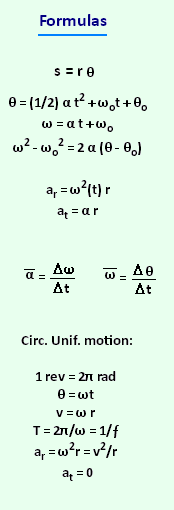
The tub of your top-loading washing machine goes into its spin cycle, starting from rest
and increasing its angular speed at the rate of 8.00 rad/s2. At the moment its angular
speed reaches 5.00 revolutions per second, you open the lid and the safety switch turns it
off; the tub then takes 12.0 s to come to rest with a uniform acceleration.
a) What is the angular speed in rad/s when you open the lid ?
b) What is the angular acceleration of the tub, in rad/s2, for the last 12.0 s of the
motion ?
c) Through how many revolutions does the tub turn in the last 12.0 s ?
d) The tub of the washer has a radius of 20.0 cm. For a point on the edge of the tub
at the instant immediately before you open the lid of the machine determine:
(i) The radial (centripetal) acceleration,
(ii) The tangential acceleration,
(iii) The magnitude of the total (net) acceleration.
Answers
a) ω = 5 x 2 π = 31.4 rad/s
ω = 31.4 rad/s
b) ω = ωo + αt
α = (ω - ωo)/t = (0 - 31.4)/12 = - 2.62 rad/s2
α = - 2.62 rad/s2
c)
θ = θo + ωo t + (1/2) α t2
= 0 + 31.4 x 12 + (1/2)(-2.62)(122) = 189 rad = 189/2π = 30 rev
θ = 189 rad = 30 rev
d)
i) ar = (31.4)2 x 20 /100 = 197.2 m/s2
ar = 197.2 m/s2
ii)
at = 8.00 x 20 /100 = 1.6 m/s2
at = 1.6 m/s2
a2 = ar2 + at2 =
(197.2)2 + (1.6)2
a = 197 m/s2
a = 197 m/s2
Problem 4
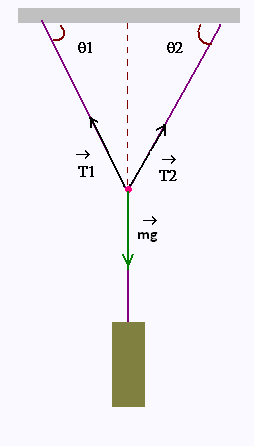
A bag of cement, of mass m, hangs from three wires as
shown in the figure. Two of the wires make angles θ1 and θ2,
respectively, with the horizontal. Show that if the system is
in equilibrium then:
T1 = mg/(sin θ1 + cos θ1 tan θ2)
Answers
An horizontal projection of the forces gives :
T1 cos θ1 = T2 cos θ2 (1)
An vertical projection of the forces gives :
T1 sin θ1 + T2 sin θ2 = m g (2)
Substituting (1) in (2) yields:
T1 = mg/(sin θ1 + cos θ1 tan θ2)
T1 = mg/(sin θ1 + cos θ1 tan θ2)
Problem 5
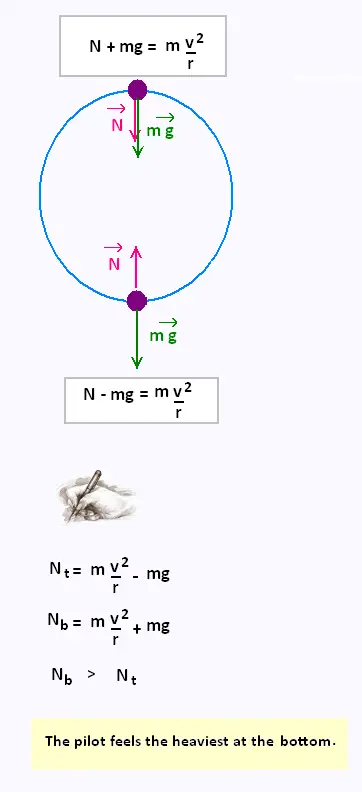
A stunt plane does a series of vertical loop-the-loops. Assuming the pilot is moving at
constant speed throughout the trajectory, at what point in the circle does the pilot feel the
heaviest (have the greatest apparent weight)?
Explain in sentence form. Include free-body
diagrams with your explanation.
Problem 6
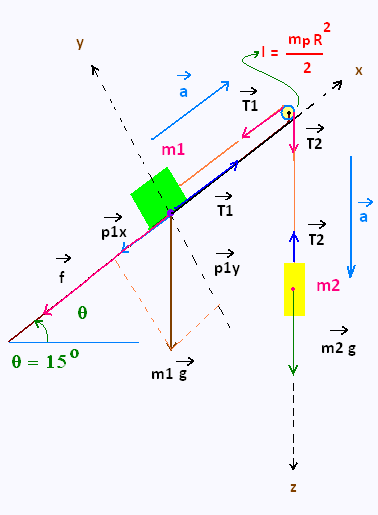
At your job at a warehouse, you have designed a
method to help get heavy packages up a 15� ramp.
The package is attached to a rope that runs parallel to
the ramp and passes over a massive pulley with a
moment of inertia I = 10.0 kg�m2 and radius of 0.20
m, at the top of the ramp.
The other end of the rope
is attached to a counterweight that hangs straight down. The mass of the counterweight is
always adjusted to be twice the mass of the package.
However, your boss is worried that the acceleration of the package will make it too
difficult to handle at the top of the ramp and tells you to calculate the acceleration of the
package.
To determine the influence of friction on the package by the ramp, you run some tests
and find that using a horizontal force of 250 N, you can push a 50.0 kg package at a
constant speed along a level floor made of the same material as the ramp.
What will be the acceleration of the package up the ramp ?
Answers
We want then to calculate the acceleration a:
P1x = m1 g sin θ
P1y = m1 g cos θ
On the y-axis:
N = m1 g cos θ
f = ν N
f = μ m1 g cos θ
On the x axis:
T1 - P1x - f = m1 a
T1 = m1 a + m1 g sin α + μ m1 g cos θ
On the z-axis :
m2 g - T2 = m2 a
T2 = m2 g - m2 a
Σ τi = τ1 + τ2 = + T1 R - T2 R = - α I
α = a /R , and
I = (1/2) mp R2
So
R(T2 - T1) = (a/R) (1/2) mp R 2.
So
T2 - T1 = ( a) (1/2) mp
=
m2 g - m2 a
- ( m1 a + m1 g sin α + μ m1 g cos θ)
(a) (1/2) mp = m2 g - m2 a
- m1 a - m1 g sin α - μ m1 g cos θ)
Then:
a = (m2g - m1g(sin θ + μ cos θ)/(m1 + m2 + mp/2)
a = (m2g - m1g(sin θ + μ cos θ)/(m1 + m2 + mp/2)
We have the following values:
μ = 250/50 x g = 5/g
m2 = 2 m1
(1/2) mp = I /R 2 = 250
With all these values, we obtain:
a = (2g - g sin θ + 5 cos θ)/(3 + mp/2m1) =
( g(2 - sin θ) + 5 cos θ)/(3 + 250/50) =
(9.8(2 - 0.26) - 4.83)/8 = 1.53 m/s
a = 1.53 m/s
Problem 7
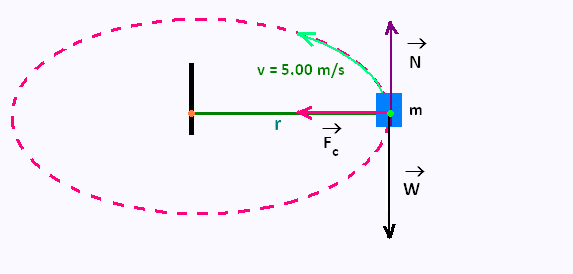
A 0.350 kg block is attached by a string to
a post in the centre of a horizontal
frictionless air table. The block revolves
around the post with a constant speed of
5.00 m/s and takes 1.20 s for each rotation.
a) Draw a fully labelled free body diagram of the block as it revolves.
b) Find the length of the string connecting the block to the centre.
c) Find the tension in the string while the block is rotating.
Answers
a) The free body diagram is drawn on the figure.
b)
We have for a circular motion:
v = ω r
, and
ω = Δθ /Δt
So
ω = 2π rad/1.2 s
r = v/ω = 1.2 v/ 2π = 1.2 x 5.00 /2 π = 0.955 m
r = 0.955 m
c) The centripetal force Fc = m v2/r =
0.350 x (5.00)2/0.955 =
9.16 N
Fc = 9.16 N
Problem 8
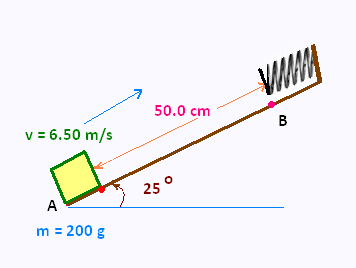
A block of mass 200 g is sent up a 25� ramp with an initial speed of 6.50 m/s. The
coefficient of friction between the block and the ramp is 0.180. After travelling up the
ramp a distance of 50.0 cm, it encounters a spring (k = 400 N/m), and continues up the
ramp as it compresses the spring.
What is the maximum compression of the spring ?
Answers
According to the work-kinetic energy theorem , we write :
KE(B) - KE(A) = W (masse) + W(friction)
(1/2) m (6.5)2 - KE(A) =
(m g sin 25 + μ m g cos 25 ) x 50.0
So
KE(A) =
(1/2) (0.2) (6.5)2 -
0.2 x 9.8 (sin 25 + 0.18 cos 25) x 50.0
= 3.6507
KE(A) = 3.6507 (J)
This energy will be used to compress the spring
by a width equal to x such that :
KE(A) = (1/2) k x 2
Then
(1/2) (400) x 2 = 3.6507
Hence:
(1/2) (400) x 2 = 3.6507 x 2/400
x = 0.135 m
x = 0.135 m
Problem 9
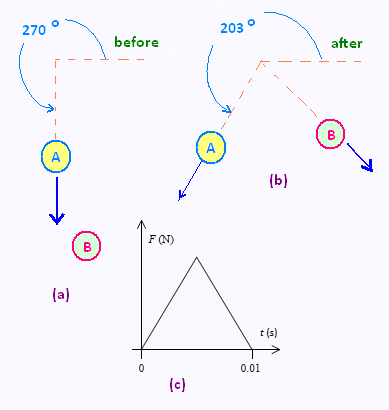
An air puck of mass 375 g (A) on a flat horizontal table has an initial velocity of 4.00 m/s
at 270� as shown. It collides with a second puck of mass 450 g (B); as a result the
original puck glides away with a velocity of 2.80 m/s at 203�.
a) What is the velocity (magnitude and
direction) of the 450 g puck after the
collision ?
b) The pucks were in contact for a period of 0.010 s, with a changing force between
them that can be represented with the simplified graph below. Using this graph,
what was the maximum force between them during the collision ?
Answers
According to the conservation of the momentum , we write:
m1 v1i = m1 v1f cos 67 + m2 v2f sin θ
m1 v1f cos 23 = m2 v2f cos θ
The quotient of the two equalities gives:
tang &thea; = .375(4 - 2.8 cos 67)/0.375 x 2.8 cos 23 = 2.9/2.577 = 1.125
Hence &thea; = 48.3750o = 360o - 48.3750o = 312o
θ = 312o
v2f = 0.375 x 2.8 cos 23 /0.450 cos 48.375 = 3.24 m/s
v2f = 3.24 m/s
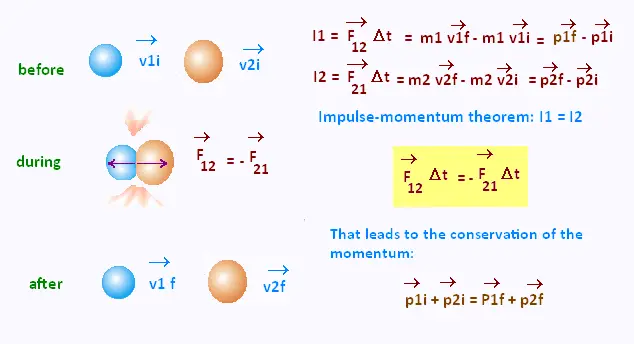
b)
We have
v2i = 0
Area = ∫ F . dt = Δp
Here Area = A = area of the triangle = Fmax . Δt /2 =
Fmax x (0.01 - 0)/2 = 0.01 Fmax /2
According to the impulse-momentum theorem,
which is the impulse is equal to tthe change in the momentum : F Δ t = m &Delta v
0.01 Fmax /2 = m2 v2f - m2 v2i = m2 v2f
So
Fmax = 2 m2 v2f /0.01
Fmax = 2 x 0.45 x 3.24/0.01 = 291.6 N
Fmax = 292 N
Problem 10
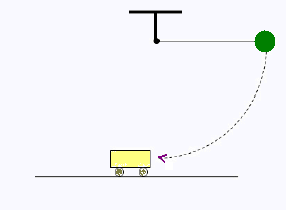
A ball attached to the end of a string is held horizontal and released, hitting a cart in a
collision which is not perfectly elastic. The cart then rolls away as the ball swings back.
For each of the three parts of the motion (a) as the ball falls down, (b) as it hits the cart,
and (c) as the two separate after collision, describe how the concept of either
conservation of momentum or conservation of mechanical energy applies.
(a) as the ball falls down
(b) as it hits the cart
(c) as the cart and ball move away from each other after the collision
(c) as the cart and ball move away from each other after the collision
Answers
a) As the ball falls down the work done by gravity is positive and the kinetic energy
increases, as ΔK = Wg , (also the loss in potential energy is equal to the gain in kinetic
energy).
b) Momentum is conserved when the ball hits the cart, and the initial momentum of
the ball is �shared� between the ball and the cart. The collision is not elastic, so kinetic
energy is lost in the collision (mainly converted to heat).
c) As the ball swings back up work done by gravity is negative, so the kinetic energy
decreases by the same amount. (Also the loss in potential energy will be converted to
potential energy). As the cart moves away after the collision it�s kinetic energy will
remain constant, unless there is a loss due to work done by friction.
Problem 11
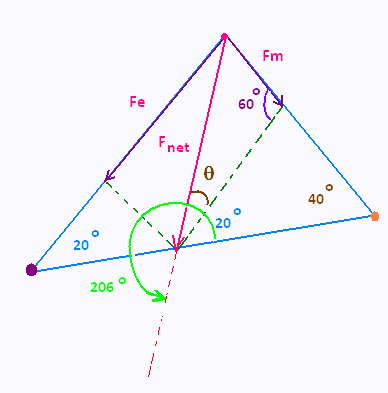
The earth has a mass of 5.97 � 1024 kg, the moon has a mass of 7.35 � 1022 kg. A
spaceship (mship = 2.60 � 104 kg) is located in space so that it is 3.30 � 108 m from the
earth and 1.10 � 108 m from the moon at 20� and 40� from the line joining them as
shown.
Calculate the magnitude of the gravitational force on the spaceship, and the angle
this force makes with the line from the earth to the moon.
Answers
Fm = G mship mmoon/rm2
Fe = G mship mearth/re2
G : gravitation constant =
6.67 x 10- 11 N � m2/kg2
According to the Al-Kachi law, we write:
Fnet2 = Fe2 + Fm2 - 2 Fe Fm cos 60o
Fnet = 90.4 N
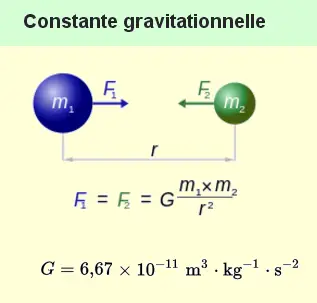 According to the sinus law, we write:
According to the sinus law, we write:
90/ sin 60 = Fm/sin θ . So
sin θ = (√3 /180) Fm =
(√3 /180)x 6.67 x 10 -11 7.35 x 1022x 2.6 104/(1.1)2 x 1016
= 0.1014
Hence
θ = 5.82o
The angle between the net force and the line from the earth to the moon is :
20 + 5.8 + 180 = 205.8o
Angle = 206o
|